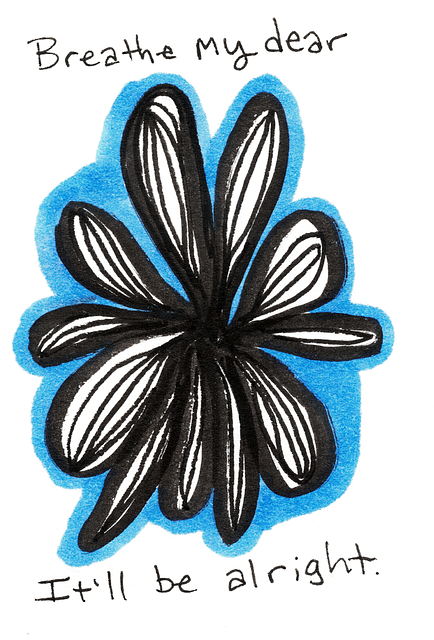Evaluating the effectiveness of mental wellness programs like Littleton Phobias Therapy requires a blend of quantitative and qualitative methods. This includes tracking symptom changes, behaviors, and overall well-being using surveys, interviews, and focus groups before, during, and after the program. Success hinges on program design incorporating resilience-building and self-esteem improvement strategies to measure both short-term gains and long-lasting positive changes. Client feedback is crucial for tailoring treatments, while quantitative analysis techniques help refine treatment protocols through structured measurements and statistical tools. Qualitative assessments offer nuanced insights into clients' fears, triggers, and coping mechanisms, enhancing the overall success of interventions.
Mental wellness program evaluations are essential to ensuring effectiveness and improving outcomes. This article explores various methods used to assess the success of initiatives, with a specific focus on Littleton Phobias Therapy. We cover quantitative techniques tracking progress, qualitative strategies for client insights, and the integral role of feedback in tailoring treatment. By understanding these evaluation methods, therapists can optimize programs, benefiting individuals seeking mental wellness, particularly those addressing phobias. Discover practical approaches to measure and enhance therapeutic outcomes.
- Understanding Mental Wellness Program Evaluation
- Methods for Assessing Program Effectiveness
- The Role of Client Feedback in Littleton Phobias Therapy
- Quantitative Analysis Techniques for Measuring Progress
- Qualitative Assessment Strategies and Their Application
Understanding Mental Wellness Program Evaluation

Evaluating mental wellness programs is a multifaceted process that goes beyond simple satisfaction surveys. It involves assessing the program’s impact on participants’ lives, including changes in symptoms, behaviors, and overall well-being. This comprehensive approach, often tailored to specific populations like those seeking Littleton Phobias Therapy, requires diverse evaluation methods. By combining quantitative data from surveys with qualitative insights through interviews or focus groups, mental health professionals can gain a deeper understanding of program effectiveness.
The design of mental health education programs plays a crucial role in evaluation success. Incorporating resilience-building components and focusing on self-esteem improvement are strategies that not only enhance program outcomes but also facilitate better assessment. These elements create a robust framework for measuring both short-term gains and long-lasting positive changes, ensuring the evaluated programs meet their intended goals and make a lasting impact on mental wellness.
Methods for Assessing Program Effectiveness

Evaluating the effectiveness of a mental wellness program is paramount to understanding its impact and identifying areas for improvement. One robust method involves collecting quantitative data through surveys, questionnaires, or structured interviews before, during, and after the program. These tools can measure changes in symptoms, attitudes, and behaviors related to specific mental health concerns, such as anxiety disorders, using validated scales tailored to conditions like Littleton phobias. By comparing pre-post intervention scores, researchers or practitioners gain insights into the program’s success in alleviating symptoms and enhancing overall well-being.
Additionally, qualitative methods, such as focus groups or individual interviews, offer valuable insights into participants’ experiences, perceptions of change, and suggestions for improvement. This feedback loop is crucial for refining the program curriculum and ensuring it aligns with the evolving needs of the target population. For instance, evaluating a Stress Management Workshop Organization’s approach to emotional regulation techniques can reveal which strategies are most effective in helping individuals manage stress and develop inner strength.
The Role of Client Feedback in Littleton Phobias Therapy

Client feedback plays a pivotal role in the effectiveness and refinement of Littleton Phobias Therapy. By actively incorporating patient insights, therapists can tailor treatments to address specific needs, enhancing the overall success rate. This feedback loop allows for a deeper understanding of what works best for individual clients, ensuring that stress reduction methods and coping skills development are aligned with their unique challenges.
Collecting client feedback involves various methods, from direct discussions to self-report questionnaires. These tools enable individuals to express their experiences, highlighting aspects like the helpfulness of certain therapy techniques, improvements in symptom management, and overall satisfaction. Such insights guide therapists in refining their approaches, integrating new strategies, and personalizing mental health education programs design to create a more engaging and effective therapeutic journey.
Quantitative Analysis Techniques for Measuring Progress

Quantitative analysis techniques play a pivotal role in evaluating the progress and effectiveness of mental wellness programs, including those specializing in conditions like Littleton phobias therapy. These methods involve structured measurements and statistical tools to assess changes over time. Common approaches include surveys with established psychometric properties, allowing for consistent and valid data collection. For instance, standardized questionnaires can gauge anxiety levels, depression symptoms, or overall life satisfaction before and after the program, providing concrete numbers to track improvements.
By employing these quantitative analysis techniques, mental health professionals gain valuable insights into the success of interventions. This data can inform adjustments to treatment protocols, such as refining burnout prevention strategies for healthcare providers, integrating mindfulness meditation practices, or incorporating compassion cultivation exercises, ultimately enhancing the overall program outcomes.
Qualitative Assessment Strategies and Their Application

Qualitative assessment strategies offer a rich and nuanced understanding of mental wellness programs’ effectiveness, particularly when tailored to unique issues like Littleton phobias. Methods such as in-depth interviews, focus groups, and observation allow participants to share their experiences, perceptions, and emotions freely. For instance, therapists using Littleton Phobias Therapy can gain valuable insights into clients’ fears, triggers, and coping mechanisms through open dialogue, ensuring treatment aligns with individual needs.
These qualitative approaches facilitate a deeper exploration of complex topics like stress reduction methods and conflict resolution techniques. They encourage participants to reflect on their journeys, providing guidance for mental wellness journaling exercises. By combining these strategies, therapists can offer personalized support, fostering a more comprehensive understanding of clients’ mental health landscapes and enhancing the overall success of interventions.
Evaluating mental wellness programs, such as Littleton Phobias Therapy, is multifaceted. By combining quantitative methods like progress measurement through data analysis with qualitative strategies like client feedback and in-depth interviews, practitioners can gain a comprehensive understanding of program effectiveness. This integrated approach not only enhances the quality of care but also ensures that services remain responsive to the evolving needs of individuals seeking support for their mental health. Through continuous evaluation, programs like Littleton Phobias Therapy can adapt and optimize their methods, ultimately improving outcomes and fostering resilience in those they serve.














